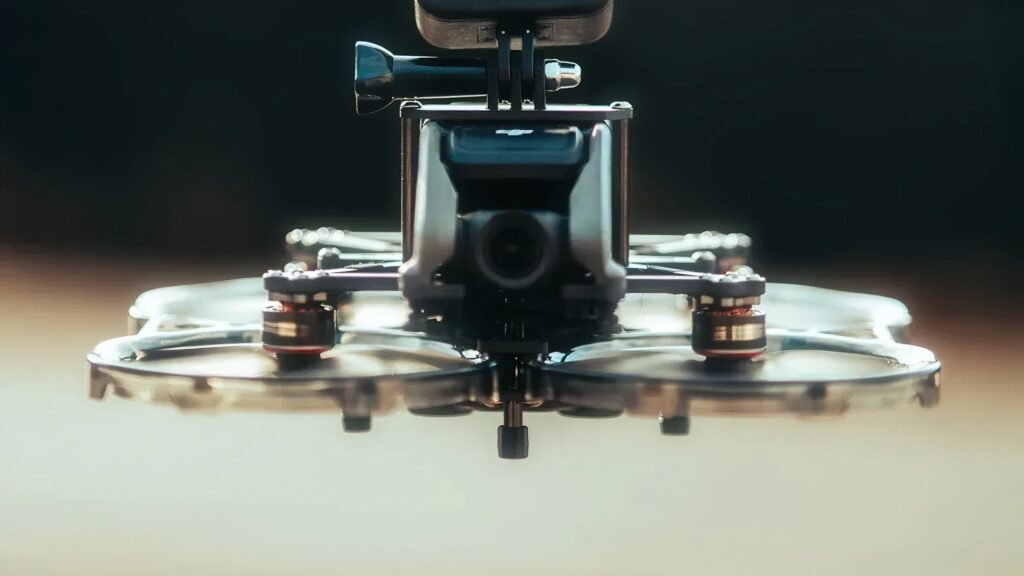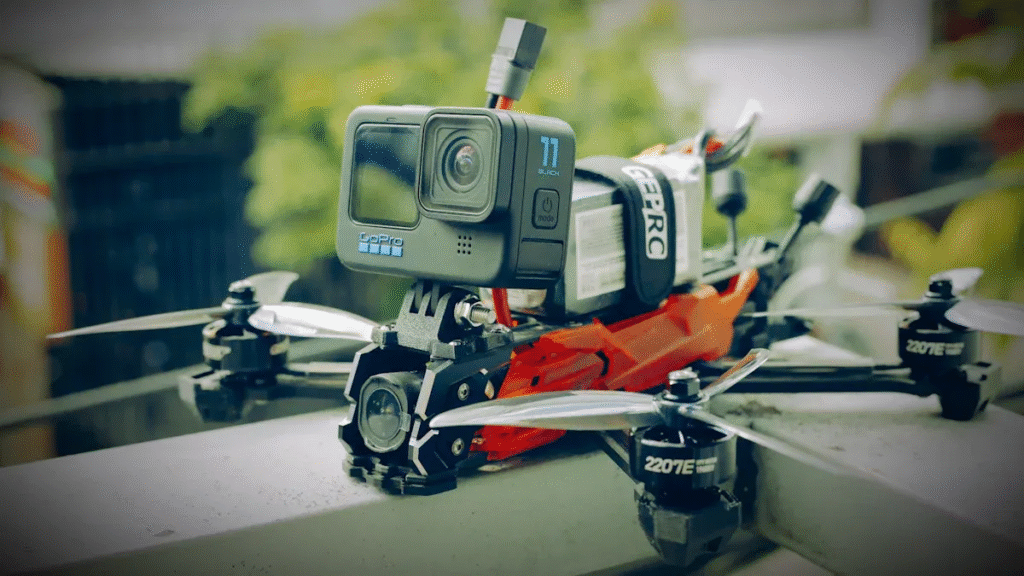Servo motors offer precise control and rapid response, making them a popular choice for industrial automation. Their key strengths include high positional accuracy, consistent speed, and reliable feedback systems. However, users often face higher costs, increased complexity, and maintenance demands.
- Advantages:
- Exceptional accuracy and speed
- Uniform torque at all speeds
- Reliable closed-loop feedback
- Disadvantages:
- High initial and maintenance costs
- Complex control requirements
- Sensitivity to wiring and environment
Retek Motion provides solutions that help users maximize these benefits and address common challenges.
Key Takeaways
- Servo motors provide precise control of position, speed, and torque, making them ideal for tasks that need accuracy and fast response.
- They maintain strong and steady torque across a wide range of speeds, which helps in handling both heavy loads and quick movements.
- Servo motors are energy efficient because they use only the power needed for the current task and can recover energy during braking.
- The main challenges include higher costs, complex setup, and regular maintenance, which require careful planning and expert support.
- Servo motors work best in robotics, CNC machines, and automation where precision and feedback are critical, but simpler motors may suit basic tasks better.
Advantages of Servo Motors

Precision Control
Servo motors deliver outstanding precision in position, speed, and torque control. Their closed-loop feedback systems use sensors like encoders to monitor the motor’s actual position and speed. The controller compares these values to the target and makes real-time adjustments. This process ensures the motor reaches and maintains the exact position or speed needed for the task.
For example, in robotics, servo motors allow robotic arms to move smoothly and stop at precise angles. In CNC machines, they enable accurate tool movement for detailed cutting and shaping. Packaging equipment uses servo motors to apply labels with accuracy as fine as ±0.5 mm, even when conveyor speeds change.
The table below highlights how servo motors compare to stepper motors in precision applications:
| Parameter | Stepper Motor | Servo Motor |
|---|---|---|
| Speed-Torque Characteristics | High torque at low speeds | Maintains torque at high speeds |
| Feedback | Open-loop (no feedback) | Closed-loop (encoder feedback) |
| Dynamic Response | Moderate | Superior |
| Holding Torque at Stop | Present without power | Requires power and feedback |
Servo motors excel in high-speed, high-torque, and dynamic response scenarios, making them ideal for applications that demand precision control.
Speed and Torque
Servo motors provide a wide range of speed and torque options. Industrial models can deliver continuous torque from 0.2 Nm to over 4,500 Nm and operate at speeds from 100 RPM to more than 10,000 RPM. This flexibility allows them to handle both heavy loads at low speeds and rapid movements with lighter loads.
Servo motors maintain consistent torque across a broad speed range. Advanced control methods, such as field-oriented control, separate torque and speed management. This means the motor can keep almost the same torque from low to high speeds until it reaches its physical limits. In contrast, other motor types often lose torque as speed increases.
In automated material handling, servo motors move conveyor belts at steady speeds, even when the load changes. In robotics, they let joints move quickly or slowly as needed, always with reliable force.
Efficiency
Modern servo motors achieve high efficiency, often above 90%. Permanent Magnet Synchronous Motors (PMSMs), a common type, use rare-earth magnets to reduce energy loss. These motors also recover energy during braking or deceleration, which is especially useful in applications with frequent starts and stops, such as robotic assembly lines.
Compared to stepper motors, servo motors only draw the power needed for the current load and speed. Stepper motors use constant power, even when not moving, which leads to wasted energy and extra heat. Servo motors adjust their power use, making them more energy efficient in most industrial and automation settings.
| Metric | Stepper Motor | Servo Motor |
|---|---|---|
| Efficiency at Low Speed | 70-80% | 80-90% |
| Efficiency at High Speed | 50-60% | 85-95% |
| Standby Power | High | Low |
| Heat Generation | High | Low |
| Energy Recovery | Not available | Possible |
Versatility
Servo motors serve a wide range of industries and applications. Their ability to deliver precise, reliable motion makes them a top choice for robotics, CNC machinery, packaging, and more. The table below shows some common uses:
| Industry | Application Examples and Benefits |
|---|---|
| Robotics | Multi-axis control for robots, enabling accurate and repeatable movements |
| Packaging Machinery | Sealing, cutting, labeling with precise and adjustable motion |
| Automated Manufacturing | Conveyor systems, pick-and-place, assembly lines |
| Medical Equipment | Surgical robots, diagnostic devices needing precise positioning |
| Automotive Industry | Welding, painting, assembly line operations |
Retek Motion stands out by offering servo motors that combine high reliability, advanced feedback systems, and flexible integration options. Their products support demanding tasks in robotics, packaging, and automation, helping businesses achieve greater accuracy and efficiency.
Disadvantages of Servo Motors
Cost
Servo motors often require a higher initial investment than other motor types. Several factors contribute to this cost:
- The purchase price depends on power output, precision, durability, and control features.
- Additional expenses include drive systems, controllers, and software integration.
- Industrial-grade models cost more due to robust construction and continuous operation capability.
- Long-term costs involve energy use, maintenance, and repairs.
- Integration and support, such as installation, programming, training, and technical documentation, add to the total cost.
- System complexity, including feedback loop tuning and safety circuits, increases setup and operational expenses.
Small- and medium-sized businesses may find these upfront costs challenging. Retrofitting existing systems to use servo motors can also increase expenses. Companies often weigh these costs against the benefits of improved performance and efficiency.
Retek Motion helps reduce cost barriers by offering modular designs, volume discounts, and expert consultation to optimize system selection and integration.
Complexity
Installing and configuring servo motors involves several technical challenges. Users must select the right motor with matching torque and encoder specifications. Motion profiling requires careful planning for acceleration, deceleration, and speed. Configuration software from the manufacturer is necessary to set up the servo driver and match it to the motor.
Proper mounting and alignment are essential to avoid mechanical issues. Electrical compatibility must be checked, including correct wiring and grounding. Feedback devices, such as encoders or potentiometers, and control algorithms like PID loops, add to the complexity. Incorrect wiring or configuration can cause non-responsiveness, erratic behavior, or even damage.
Servo motors use closed-loop control systems. These systems rely on feedback from encoders or resolvers to adjust position, speed, and torque. This level of control requires more advanced setup than open-loop systems found in stepper or standard DC motors.
Retek Motion addresses complexity by providing tailored solutions, advanced control algorithms, and expert support. Their team assists with motor selection, configuration, and tuning, making the process easier for users.
Maintenance
Servo motors require regular maintenance, especially in continuous operation environments. Service intervals depend on usage intensity and environment. Light-duty applications may need servicing every 12 months, while heavy-duty or continuous use may require checks every 3-6 months.
Key maintenance tasks include:
- Inspecting components such as bearings, gears, and feedback devices for wear.
- Cleaning motors to prevent dust and debris buildup, which can block cooling and reduce efficiency.
- Lubricating bearings and gears with the correct type and amount of lubricant.
- Monitoring for overheating, vibration, and unusual noise using diagnostic tools.
- Replacing worn parts like bearings, brushes, and seals as needed.
- Keeping detailed records of maintenance activities and following manufacturer guidelines.
Brushless servo motors need less maintenance than brushed models, but induction motors remain the easiest to maintain due to their simple design. Maintenance costs and downtime can be higher for servo motors, especially if users lack trained personnel or proper facilities.
Retek Motion uses brushless designs and predictive maintenance features to reduce maintenance needs and extend motor life. Their products support real-time monitoring and diagnostics, helping users prevent failures and minimize downtime.
Sensitivity
Servo motors are sensitive to environmental and electrical factors. Overheating can occur due to excessive load, poor ventilation, or high ambient temperatures. Contamination from dust, oil, or coolant can damage bearings, encoders, and windings. Mechanical misalignment causes vibration and wear, leading to failure.
| Environmental Factor | Description |
|---|---|
| Overheating | Excessive load, poor ventilation, or high temperatures can cause damage. |
| Encoder Failures | Vibration, contamination, or electrical noise disrupt performance. |
| Mechanical Misalignment | Improper alignment leads to vibration, wear, and eventual failure. |
Electrical noise and electromagnetic interference (EMI) can disrupt servo motor operation. EMI may cause data loss, component damage, or control malfunctions. Proper installation practices, such as cable shielding, grounding, and surge suppression, are essential to maintain performance.
Retek Motion ensures durability by testing products for harsh environments and offering models with IP67 protection. Their solutions include advanced EMI management and robust feedback systems to maintain reliability.
When to Use Servo Motors
Ideal Applications
Servo motors work best in situations that demand high precision, fast response, and reliable feedback. These motors excel in robotics, CNC machines, and automated assembly lines. They deliver accurate control of position, speed, and torque, which is essential for tasks like robotic arms, pick-and-place machines, and packaging systems. In these environments, servo motors provide high throughput and can handle variable loads with ease. Their ability to maintain torque at both low and high speeds makes them suitable for dynamic axes that require quick acceleration and tight coordination. Many industries choose servo motors for applications where repeatability and exact positioning are critical.
Tip: For projects that need fast reaction to control changes or high torque at zero velocity, servo motors often outperform other motor types.
When to Avoid
Some applications do not require the advanced features of servo motors. Stepper motors or AC motors may be a better choice for simple, low-speed tasks with predictable loads. For example, stepper motors offer reliable performance and cost savings in basic positioning systems, such as 3D printers or simple conveyor belts. AC motors work well in constant speed operations like fans or pumps. These alternatives provide simpler control and lower costs, making them ideal for projects where high precision and dynamic response are not necessary.
| Motor Type | Best Use Cases | Main Advantage |
|---|---|---|
| Servo Motors | Robotics, CNC, automation, variable loads | Precision, speed, feedback |
| Stepper Motors | 3D printers, basic conveyors, low-speed tasks | Simplicity, cost-effectiveness |
| AC Motors | Fans, pumps, constant speed machinery | Reliability, low maintenance |
Decision Factors
Selecting the right motor involves several important factors. Start by defining the application’s speed, torque, and accuracy needs. Review the torque-speed curve to ensure the motor can handle the load. Consider the physical space available and the environment, such as temperature and dust levels. Evaluate the need for feedback devices to achieve precise control. Budget also plays a key role, as servo motors cost more but offer greater performance. Experts recommend consulting with manufacturers like Retek Motion to match the motor to both current and future requirements. Their team can help assess technical data, environmental conditions, and integration needs for the best results.
Note: Careful planning and expert advice can help avoid costly mistakes and ensure the chosen motor meets all operational demands.
Businesses see both benefits and challenges when choosing advanced motion solutions. High precision, fast response, and reliable feedback support demanding tasks in robotics, manufacturing, and medical devices. However, higher costs and complex setup require careful planning.
Decision-makers should weigh these factors:
- Slotless designs improve control and accuracy.
- Automation trends and new technologies drive growth in many industries.
- Upfront investment and skilled staff remain important considerations.

Consulting experts helps match solutions to specific needs and ensures long-term success.



